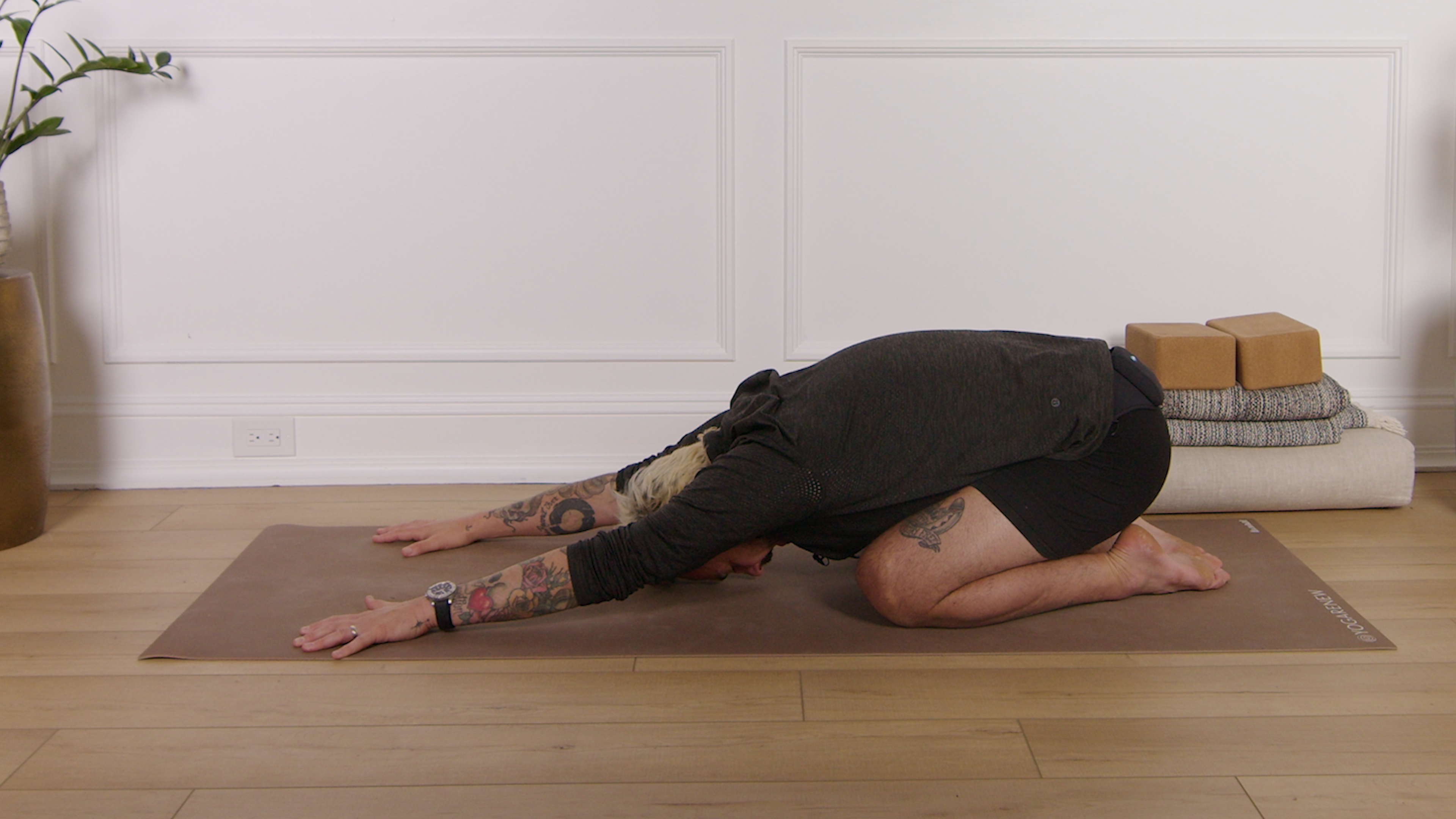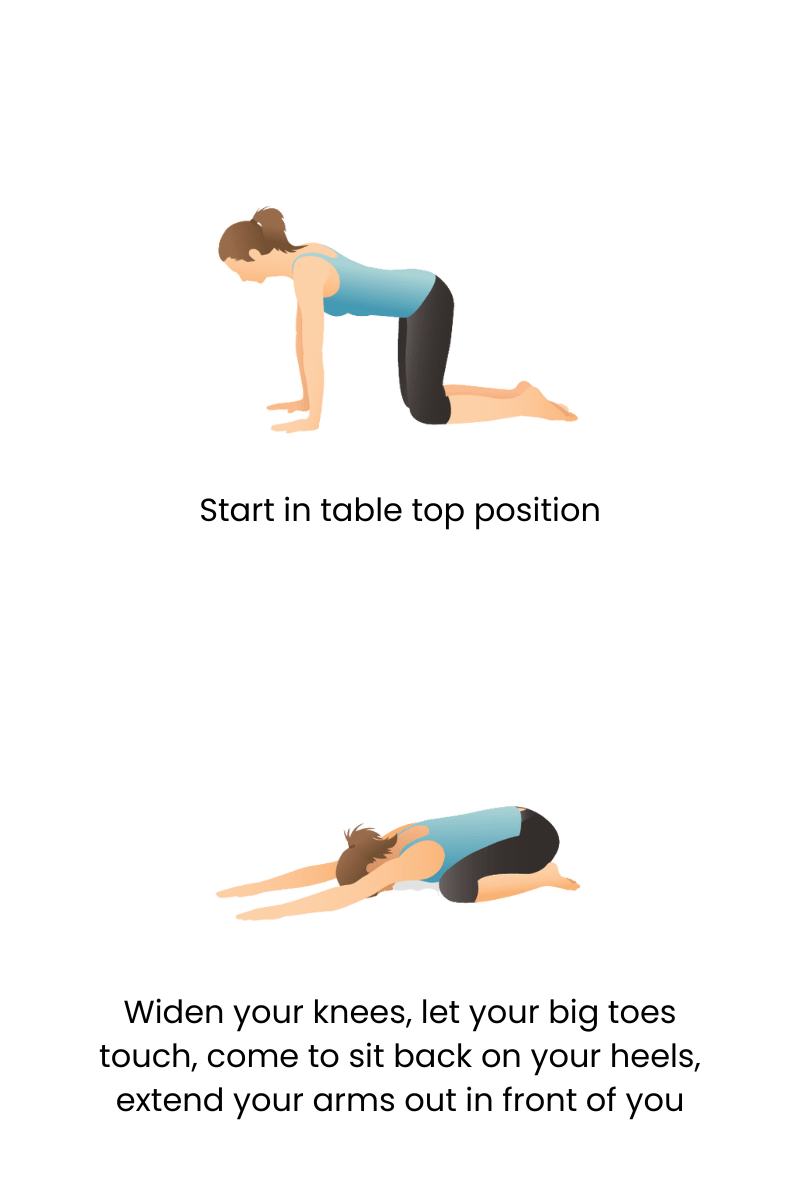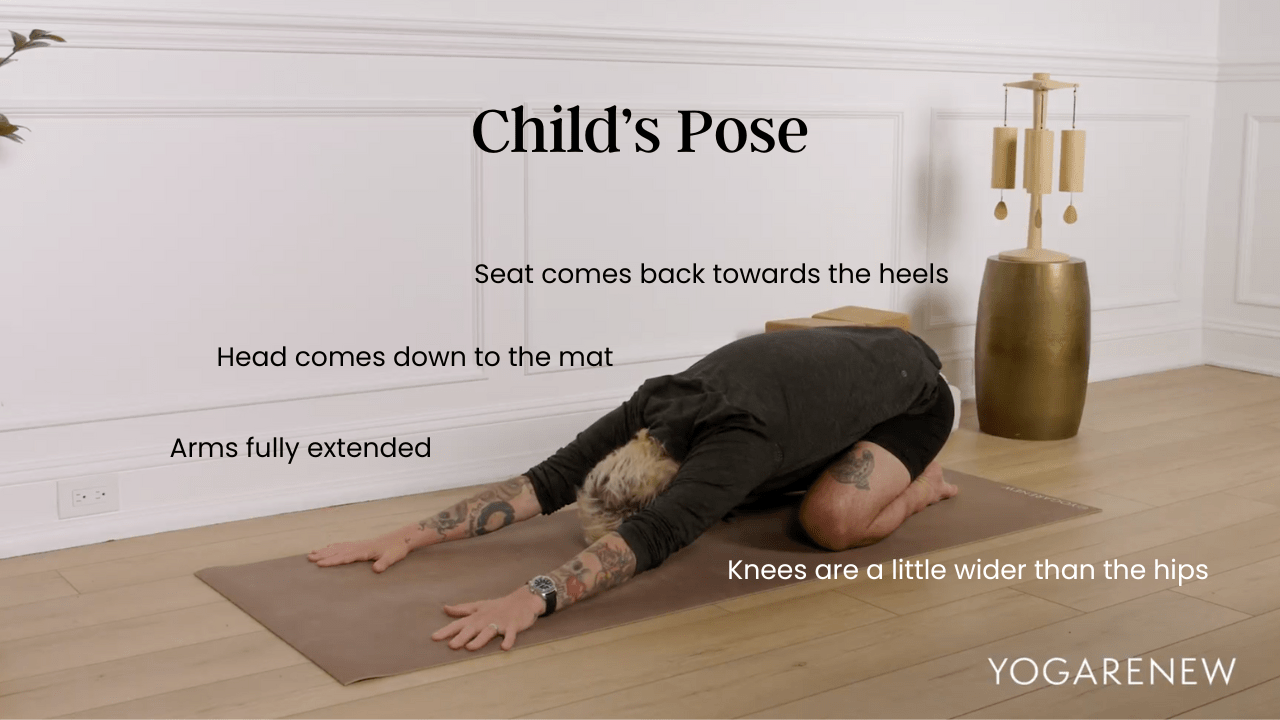What is Child’s Pose?
English Name: Child’s Pose
Sanskrit Name: Balasana (pronounced Bah-lahs-anna)
Category: Forward Fold, Seated Pose, Foundational Pose

English Name: Child’s Pose
Sanskrit Name: Balasana (pronounced Bah-lahs-anna)
Category: Forward Fold, Seated Pose, Foundational Pose
Child’s Pose, or Balasana in Sanskrit, is a gentle, grounding yoga posture that invites the body to surrender and soften. Rooted in the word bala, meaning “child,” this asana mirrors the natural fetal position—symbolizing a return to simplicity, safety, and introspection. With the knees wide or together, the forehead resting down, and the arms extended or tucked alongside the body, Balasana provides a deep sense of rest while gently stretching the back, hips, and thighs. It’s a moment of stillness that encourages the breath to slow and awareness to turn inward—perfect as a counterbalance to more dynamic poses in a yoga sequence.
More than just a resting shape, Child’s Pose holds a quiet significance in any yoga practice. It offers a sacred pause—an opportunity to reset physically, mentally, and emotionally. Whether used between challenging asanas or at the start and close of a class, Balasana invites practitioners to honor their boundaries, reconnect with the breath, and cultivate a sense of inner safety. Its humble yet powerful presence reminds us that yielding can be just as transformative as striving.

Suggested transitions: Downward-Facing Dog, Tabletop, or Cat-Cow.

1. Knee Injuries or Sensitivity: Since the knees are deeply flexed in this pose, anyone with knee pain, arthritis, or recent injury/surgery should approach Balasana with caution. Placing a folded blanket behind the knees or practicing a modified version with less flexion can help, but in some cases, it may be best to skip the pose altogether.
2. Pregnancy (Especially in Second and Third Trimesters): As the belly grows, compressing the abdomen in a forward fold can become uncomfortable or unsafe. Pregnant practitioners should take a wide-kneed variation or elevate the torso with props—or consider substituting with a seated forward fold or supported reclined pose.
3. Ankle or Foot Issues: The tops of the feet press into the floor in Child’s Pose, which can be painful for people with ankle injuries or conditions like plantar fasciitis. A rolled blanket under the ankles can help relieve pressure, but discomfort may still persist.
4. Hip Restrictions: While Balasana is often used to open the hips, tightness in the hips or groin may make the pose feel strained or uncomfortable. Props like blocks under the hips or between the knees can offer relief, but modifications may still be necessary.
5. Low Blood Pressure or Dizziness: Coming into or out of the pose too quickly can cause dizziness, especially in people prone to low blood pressure. Moving slowly and mindfully, and using the hands to press up gradually, can help mitigate this issue.
6. Recent Abdominal Surgery or Digestive Discomfort: Because the pose involves abdominal compression, it may be contraindicated after abdominal surgeries, during active gastrointestinal issues, or for those with hernias. A modified or more upright version should be considered instead.
Child’s Pose is more than just a resting shape—it’s a sacred space for reflection and healing. In yoga, we use Balasana as a moment to pause, breathe, and return home to ourselves.
Whether guiding others or practicing solo, this posture offers profound emotional, mental, and physical nourishment. Through props, breath, and intention, Child’s Pose can transform from a simple shape into a deeply therapeutic ritual.
Start with 3 breaths per set. Increase to 5–8 breaths or 3–5 sets as strength and confidence grow.
Yes—keep hips at or below knee level, and use support under your pelvis as needed.
Absolutely. Perform on fists, forearms, or use wedges to minimize wrist extension.
Gain access to a multitude of yoga series, classes and workshops with YogaRenew’s world renowned teachers and experts. From carefully curated yoga series and basic pose instruction, there’s something for everyone. Don’t wait—start your free trial today!